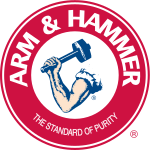
Sodium bicarbonate (IUPAC name: sodium hydrogencarbonate), commonly known as baking soda or bicarbonate of soda, is a chemical compound with the formula NaHCO3. It is a salt composed of a sodium cation (Na+) and a bicarbonate anion (HCO3−). Sodium bicarbonate is a white solid that is crystalline, but often appears as a fine powder. It has a slightly salty, alkaline taste resembling that of washing soda (sodium carbonate). The natural mineral form is nahcolite. It is a component of the mineral natron and is found dissolved in many mineral springs.
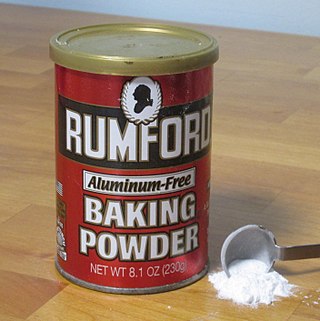
Baking powder is a dry chemical leavening agent, a mixture of a carbonate or bicarbonate and a weak acid. The base and acid are prevented from reacting prematurely by the inclusion of a buffer such as cornstarch. Baking powder is used to increase the volume and lighten the texture of baked goods. It works by releasing carbon dioxide gas into a batter or dough through an acid–base reaction, causing bubbles in the wet mixture to expand and thus leavening the mixture. The first single-acting baking powder, which releases carbon dioxide at room temperature as soon as it is dampened, was developed by food manufacturer Alfred Bird in England in 1843. The first double-acting baking powder, which releases some carbon dioxide when dampened, and later releases more of the gas when heated by baking, was first developed by Eben Norton Horsford in the U.S. in the 1860s.

Armand Hammer was an American business manager and owner, most closely associated with Occidental Petroleum, a company he ran from 1957 until his death. Called "Lenin's chosen capitalist" by the press, he was also known for his art collection and his close ties to the Soviet Union.

Surge is a citrus-flavored soft drink first produced in the 1990s by The Coca-Cola Company to compete with Pepsi's Mountain Dew. Surge was advertised as having a more "hardcore" edge, much like Mountain Dew's advertising at the time, in an attempt to lure customers away from Pepsi. It was originally launched in Norway as Urge in 1996, and was so popular that it was released in the United States as Surge in 1997. Lagging sales caused production to be ended in 2003 for most markets.
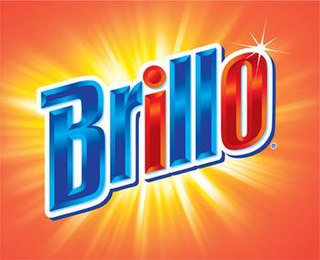
Brillo is a trade name for a scouring pad, used for cleaning dishes, and made from steel wool impregnated with soap. The concept was patented in 1913, at a time when aluminium pots and pans were replacing cast iron in the kitchen; the new cookware blackened easily. The company's website states the name Brillo is from the Latin word for "bright", although no such word exists in Latin. In Spanish the word brillo means the noun "shine"; however, German, Italian, French, and English do have words for "shine" or "bright" beginning with brill- deriving from Latin words for beryl.
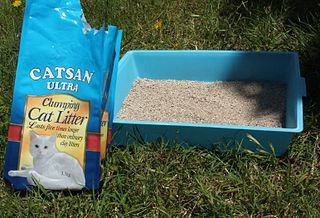
A litter box, also known as a sandbox, cat box, litter tray, cat pan, potty, pot or litter pan, is an indoor feces and urine collection box for cats, as well as rabbits, ferrets, miniature pigs, small dogs, and other pets that instinctively or through training will make use of such a repository. They are provided for pets that are permitted free roam of a home but who cannot or do not always go outside to excrete their metabolic waste.

Church & Dwight is an American consumer goods company focusing on personal care, household products, and specialty products. The company was founded in 1846 and is headquartered in Ewing, New Jersey. It is the parent company of well-known brands such as Arm & Hammer, Trojan, OxiClean, and First Response. In 2021, Church & Dwight reported annual revenue of $3.6 billion. The company's products and services include a wide range of consumer goods, including laundry detergent, air fresheners, baking soda, condoms, pregnancy tests, and oral hygiene products.

Quick bread is any bread leavened with a chemical leavening agent rather than a biological one like yeast or sourdough starter. An advantage of quick breads is their ability to be prepared quickly and reliably, without requiring the time-consuming skilled labor and the climate control needed for traditional yeast breads.

A saltine or soda cracker is a thin, usually square cracker usually made from white flour, sometimes yeast, and baking soda, with most varieties lightly sprinkled with coarse salt. It has perforations over its surface, as well as a distinctively dry and crisp texture.
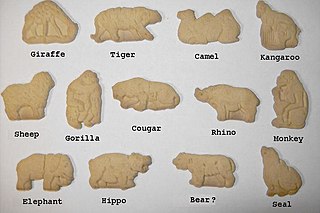
An animal cracker is a particular type of cracker, baked in the shape of an animal, usually an animal either at a zoo or a circus, such as a lion, a tiger, a bear, or an elephant. The most common variety is light-colored and slightly sweet, but darker chocolate-flavored and colorful frosted varieties are also sold. Although animal crackers tend to be sweet in flavor like cookies, they are made with a layered dough like crackers and are marketed as crackers and not as cookies.

Mentadent is a brand name for a line of dental products manufactured by Unilever for its home and international markets excluding the United States and Canada where the company sold its rights to the brand to Church & Dwight Company in 2003.

Corelle Brands, LLC was an American kitchenware products maker and distributor based in Downers Grove, Illinois. In 2019, the company merged with Instant Brands.
Sodium lauroyl sarcosinate (INCI), also known as sarcosyl, is an anionic surfactant derived from sarcosine used as a foaming and cleansing agent in shampoo, shaving foam, toothpaste, and foam wash products.

Pigeon Corporation, established in 1978, is a manufacturer of household products. In August 1978, the company created of “Pigeon”, the first fabric softener made in Korea. The company has more than 50% of the Korean market for fabric softeners in Korea.
Arm and hammer is a symbol of industry, and the god Vulcan.

Carter-Wallace was a personal care company headquartered in New York City. The company was formed by the merger of Carter Products and Wallace Laboratories. The company has a research facility in Cranbury, New Jersey.

The arm and hammer is a symbol consisting of a muscular arm holding a hammer. Used in ancient times as a symbol of the god Vulcan, it came to be known as a symbol of industry, for example blacksmithing and gold-beating. It has been used as a symbol by many different kinds of organizations, including banks, local government, and socialist political parties.
John Dwight was an American manufacturer and businessman. He was a pioneer manufacturer of bicarbonate of soda in the United States. The product had a variety of uses and sold nationwide in quantities resulting in a multi-million dollar industry. He was known in the merchandising industry for selling cleaning and baking products to grocery stores and supply vendors under the Cow Brand trademark.
Austin Church (January 8, 1799 – August 7, 1879) was an American medical doctor and a pioneer of bicarbonate of soda manufacturing. He was a co-founder of the company that first developed the product in America from chemical compound salts. His company was the first to use the Arm & Hammer trademark to sell the product as a baking soda. He was a businessman involved with merchandising the soda product in a variety of uses from cooking and cleaning ingredients to health product supplements. As a philanthropist Church was involved with charities across the United States.
